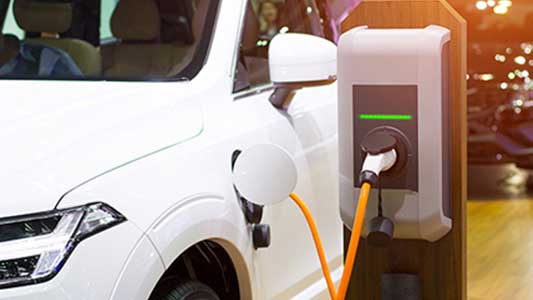New Delhi: Electric vehicles (EVs) witnessed a strong growth in the Indian market in 2022, with a threefold increase in sales as compared to the year before. Official data shows that Indians have bought 2.78 lakh EVs since January 2023 at an average of more than 90,000 EVs per month. Significantly, the demand for EVs is not just limited to metro cities such as Delhi, Mumbai, and Bengaluru, but is increasing in Tier-2 and Tier-3 markets as well.
On the occasion of World Earth Day, experts from International Council of Clean Transportation (ICCT) and The Energy and Resources Institute (TERI) reckon that the increasing awareness on environmental and cost-related benefits of EVs are driving the EV demand in the country.
Mr. Amit Bhatt, Managing Director for India, ICCT, said, “Smaller cities have the potential to become strong drivers of India’s clean energy revolution. The adoption of EVs in these cities can reduce their carbon footprint and contribute to the ongoing nationwide efforts to combat air pollution and climate change. Transitioning to EVs in Tier-2 and Tier-3 cities will also help in lessening India’s dependence on fossil fuels, cutting down on import bills, and reducing air pollution. This shift will create a self-reliant and sustainable energy ecosystem that will contribute significantly to the country’s economic growth.”
“Moreover, the adoption of EVs in smaller cities will create new business opportunities and job opportunities in sectors such as manufacturing, supply chain, and charging infrastructure. This, in turn, will drive the economic growth and development of these regions. Wide-scale participation of Tier-2 and Tier-3 cities in India’s EV transition will help greatly in creating a greener nation. To ensure that this happens, it is essential to address challenges such as the lack of charging infrastructure; the need for greater awareness among consumers; and the need to develop local supply chains and manufacturing capabilities for EVs,” he added.
“Developing local supply chains and manufacturing capabilities is especially important as it can create job opportunities and reduce the cost of EVs, making them more affordable for consumers. If the government provides tax incentives, low-interest loans, and other financial support, like in larger cities, it will accelerate EV adoption in smaller cities as well,” Mr. Bhatt said.
According to Mr. Sharif Qamar, Associate Director and Area Convenor, Transport and Urban Governance Division, TERI, there are seven areas of focus for accelerating adoption of EVs across different geographies – institutional and policy readiness; infrastructure readiness; technology readiness; economic readiness; social readiness; environmental readiness; and innovation readiness.
“It is an incredibly steep technology curve that the industry has traversed in the past 6-7 years. This has enhanced the comfort, trust, and reliability of the EV ecosystem in the eyes of consumers, for all vehicle segments – three-wheelers, four-wheelers, buses, and small commercial vehicles – albeit at different levels. As the penetration of renewable energy in the power grid increases, the efficacy of EV technology in dealing with well-to-wheel emissions will be higher and its contribution to climate goals greater,” said Mr. Qamar.
Speaking about the penetration of EVs in the Indian market, Mr. Qamar added, “India is one of the biggest two-wheeler markets in the world. Two-wheelers account for about 80 percent of the vehicle population in the country. Non-urban markets accounts for 50-60 percent of the total sales. With more and more OEMs and models coming into the market, we anticipate that demand for electric two-wheelers will pick up sharply owing to both push and pull factors of demand generation.”
As per the official estimates by ICCT, an ambitious vehicle electrification pathway – under which EVs could reach 95 percent of all new vehicle sales by 2040 – can help in reducing tailpipe emissions by 18-50 percent, depending on the pollutant.
Elaborating further, Mr. Amit Bhatt of ICCT said, “One of our recent studies revealed that, even with the existing grid, EVs in India currently emit between 19-34 percent less greenhouse gas emissions over their entire life cycle, as compared to traditional internal combustion engine cars. Electric two-wheelers yield an even greater reduction in emissions, in the range of 33-50 percent. As India continues to decarbonize its grid, these emissions could decrease even further. This is great news, and reason for optimism, as it indicates a clear pathway to achieving cleaner road transportation.”
The momentum for EVs in India results from a combination of various factors – increasing concerns over air pollution and climate change; central government incentives and policies, including the Faster Adoption and Manufacturing of (Hybrid &) Electric Vehicles scheme; state-level EV policies; declining costs of EV batteries; advancements in technology; and growing investments by domestic and international players in EV manufacturing and charging infrastructure. Together, these elements are paving the way for a clean, sustainable future of transportation in the country.












